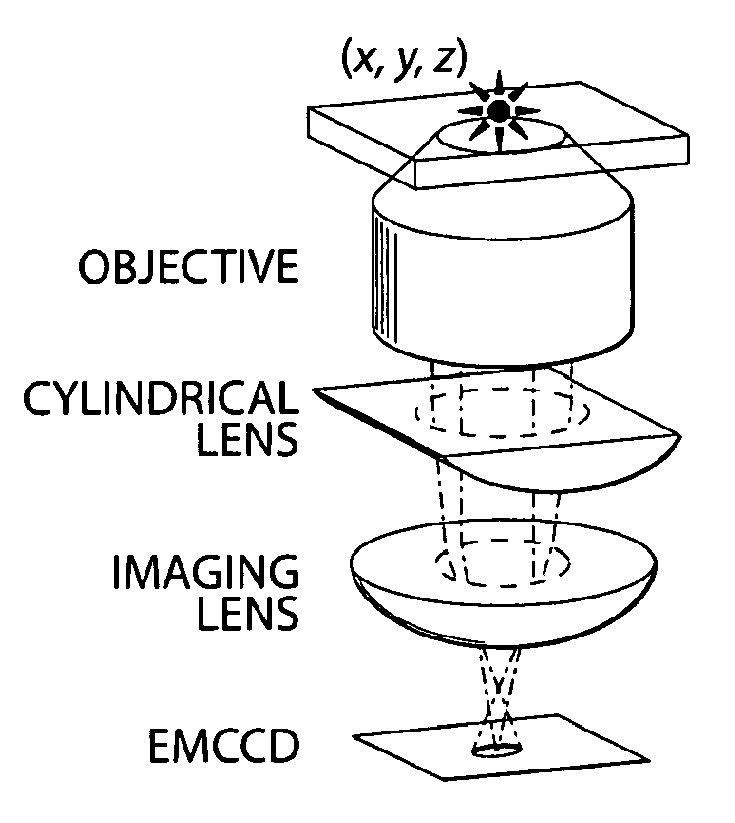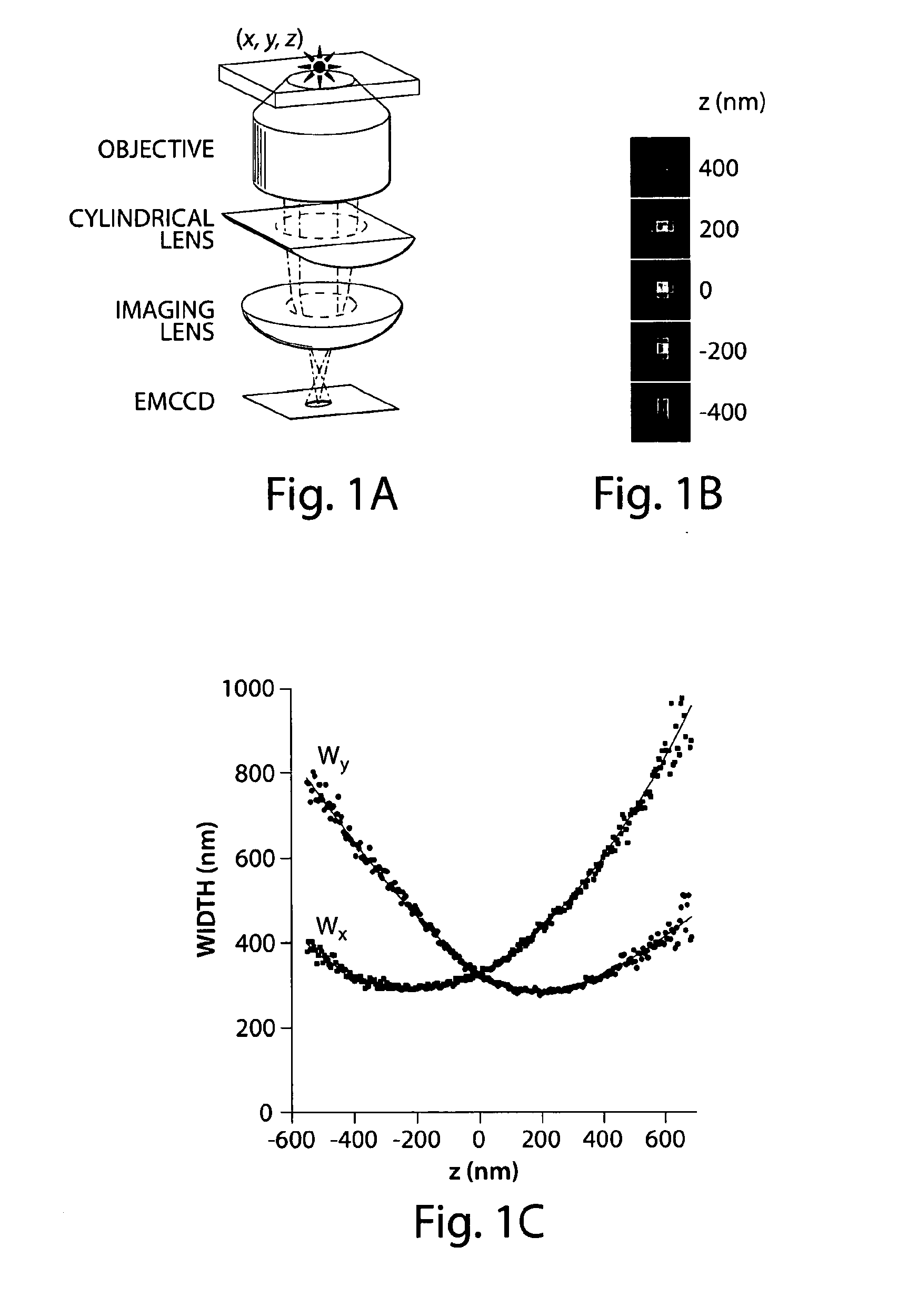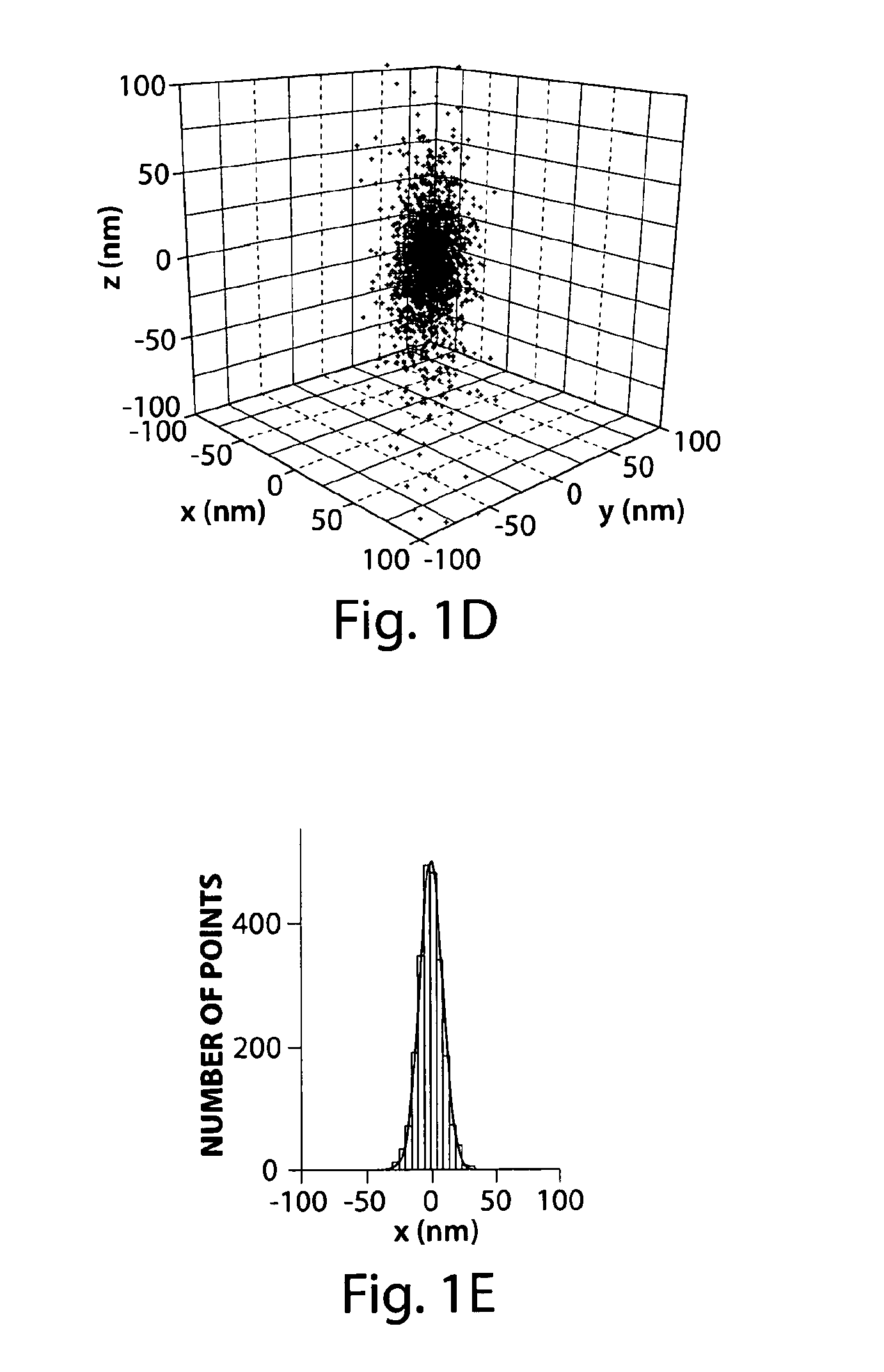Sub-diffraction limit image resolution in three dimensions
a three-dimensional, sub-diffraction limit technology, applied in the direction of instruments, optical elements, fluorescence/phosphorescence, etc., can solve the problems of electron microscopy using electrons, unsatisfactory limitations, and standard fluorescence microscopy not being useful for ultra-structural imaging,
- Summary
- Abstract
- Description
- Claims
- Application Information
AI Technical Summary
Benefits of technology
Problems solved by technology
Method used
Image
Examples
example 1
[0051]This example demonstrates 3-dimensional imaging with a spatial resolution that is about 10 times better than the diffraction limit in all three dimensions without invoking sample or optical beam scanning. In International Patent Application No. PCT / US2007 / 017618, filed Aug. 7, 2007, entitled “Sub-Diffraction Limit Image Resolution and Other Imaging Techniques,” published as Int. Pat. Apl. Pub. No. WO 2008 / 091296 on Jul. 31, 2008, incorporated herein by reference, the photoswitchable nature of certain fluorophores was used to separate the otherwise spatially overlapping images of numerous molecules, and high degrees of localization were achieved in the lateral dimensions for individual fluorescent dyes.
[0052]However, this example, and the following examples, illustrates imaging in all three dimensions by stochastic activation of an optically resolvable subset of photo switchable probes, determination of the coordinates for each probe with high accuracy, and construction of a th...
example 2
[0068]This example describes certain techniques useful with respect to Example 1. To characterize the 3D localization accuracy of the photoswitchable probes of Example 1, streptavidin molecules (Invitrogen) were labeled with photoswitchable Alexa 647 fluorophore (Invitrogen) and the activator dye Cy3 (GE Healthcare) by incubating the protein with amine-reactive dyes following the suggested protocol from the manufacturers. Unreacted dye molecules were removed by gel filtration using a Nap-5 column (GE Healthcare). The labeling ratio was characterized by a UV-Vis spectrophotometer, and the absorption spectrum indicated a labeling ratio of ˜2 Cy3 and ˜0.1 Alexa 647 per streptavidin molecule. The labeled streptavidin was then immobilized onto the surface of a glass flow chamber assembled from a glass slide and a #1.5 coverglass. Slides and coverglasses were cleaned by sonicating in 1 M potassium hydroxide for 15 min, followed by extensive washing with MilliQ water and drying with compre...
PUM
 Login to View More
Login to View More Abstract
Description
Claims
Application Information
 Login to View More
Login to View More - R&D
- Intellectual Property
- Life Sciences
- Materials
- Tech Scout
- Unparalleled Data Quality
- Higher Quality Content
- 60% Fewer Hallucinations
Browse by: Latest US Patents, China's latest patents, Technical Efficacy Thesaurus, Application Domain, Technology Topic, Popular Technical Reports.
© 2025 PatSnap. All rights reserved.Legal|Privacy policy|Modern Slavery Act Transparency Statement|Sitemap|About US| Contact US: help@patsnap.com



